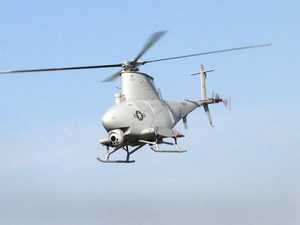A decade ago, the Air Force had begun the process of replacing their old fleet of tankers, and at that time the number of drones or unmanned aerial vehicles was just a handful.
Finally, when in February 2011, the contract for tankers was awarded to Boeing, the tally of unmanned aerial vehicles came to 7000. These highly capable robots had in them the capacity to change a number of things. Peter Warren Singer, who is the author of the book, ‘Wired for War’, revealed during a lecture at the Office of Naval Research that they there was a change in both the history of war and humanity. A lot of unmanned systems both big and small such as small UAVs to airliner sized systems are being developed.
 Fire Scout
Fire Scout
The DARPA project is speedily moving forward with its $33 million KQ-X, which has been creating an unmanned aerial tanker for the purpose of refueling other unmanned vehicles. For testing control issues, a NASA Global Hawk along with a manned Proteus flew alongside at a distance of 40 feet from each other. Moreover, in the spring of 2012, two autonomous Global Hawks would perform a refueling mission.
In the future, it is most likely that a number of unmanned systems would be filling up the skies and it is significant that the UAV aerial tankers have been developed. Singer who is also the Director of the 21st century defense initiative of the Brookings Institution has stated that according to one of the three star Generals of the Air Force, tens of thousands of aerial robots would be used in the future.
Currently, the Air Force is giving training to more robot system operators than to pilots. Before the manned KC-46As are constructed, production of unmanned aerial tankers would be necessary. Most of the Global Hawk and the Fire Scout are being built in Moss Point and probably even the Fire-X, the bigger version of the Fire Scout would be built here.